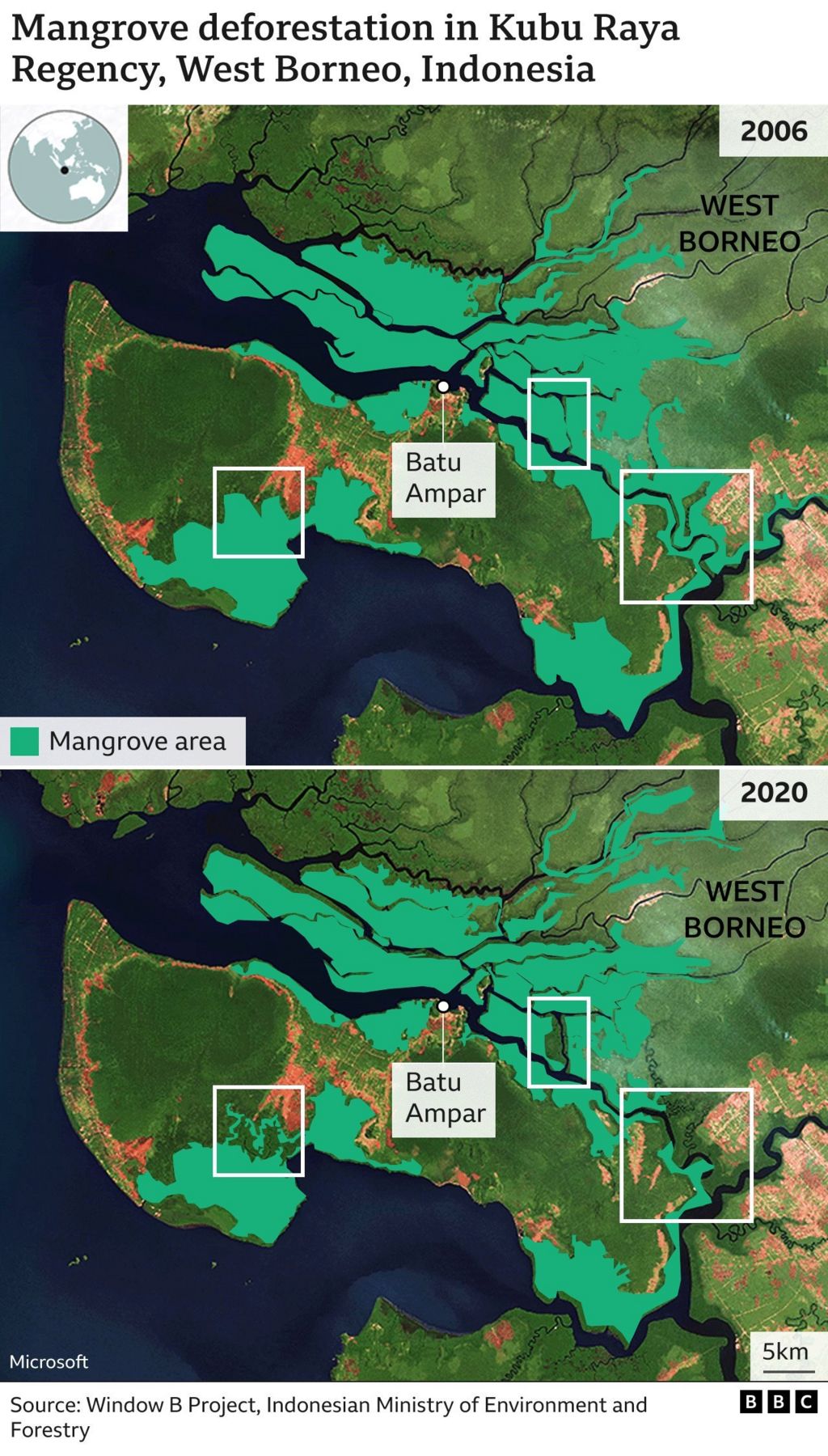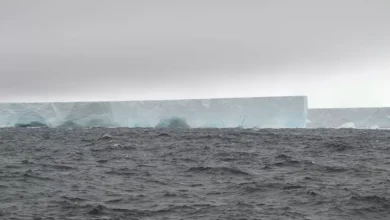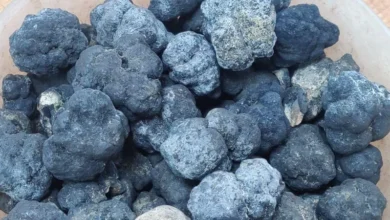Burning mangrove trees for a living: ‘I’d quit tomorrow if I could’

Indonesia has more mangrove trees than any other country but there’s growing concern about the “dangerous” rate they are being cut down, turned into charcoal and exported to places such as Europe, China and Japan. People involved in the work know the trees are important for the environment and would like to quit but they see no other way to survive.
Inside a wooden hut, near his house on the island of Borneo, Nurhadi keeps two furnaces burning all year round. The 68-year-old employs at least a dozen people.
Four men cut up wood collected from mangrove trees, while another throws it into a furnace made from earth and stones. Once burned, the wood is cooled and packaged, ready to be sold.
Mangrove wood is very hard and dense but not very durable, which makes it ideal for charcoal production and particularly good for barbeques. But it is a resource-intensive process with little return.
Sixteen tonnes of raw material only produces three tonnes of charcoal. “If I produce less than three tonnes, it’s a loss,” Nurhadi says. Once costs are taken into account, he estimates he only makes a profit of about $1,250 (£1,000) per year.
“There’s no money in cutting down mangroves. Nobody gets rich from charcoal furnaces. We do this to have food on our plate,” he explains.
A conversation he once had with a government official sums up his predicament: “He asked me: ‘Are you ready to leave the charcoal business?’ I answered: ‘If you can provide farming land or other opportunities, I’d quit tomorrow.'”
Almost half of the 9,000 people in Nurhadi’s village, Batu Ampar, rely on mangrove charcoal for a living, a tradition dating back to the 1940s. Some families like Nurhadi’s have been doing this for generations – his father and grandfather owned the same furnaces, so he says this is the only work he knows.
Indonesia is home to 20% of the world’s mangroves, and Nurhadi’s area, the Kuba Raya Regency has the biggest mangrove forest in the western part of Indonesian Borneo.
But the number of furnaces is increasing – in 2000 there were 90 but today there are at least 490 – and that is speeding up deforestation.

Arsyad Al Amin, who is involved in a local research project, predicts that the Batu Ampar mangrove forest will only last for another 74 years if things carry on as they are. “It will all be gone in 2096,” the researcher from the Bogor Agricultural Institute says.
Thick, dense forest areas of mangrove canopy have decreased so much that bare patches can now be seen from planes overhead.
“If there is no effort to accelerate rehabilitation, this is dangerous. We desperately need intervention,” he warns.









